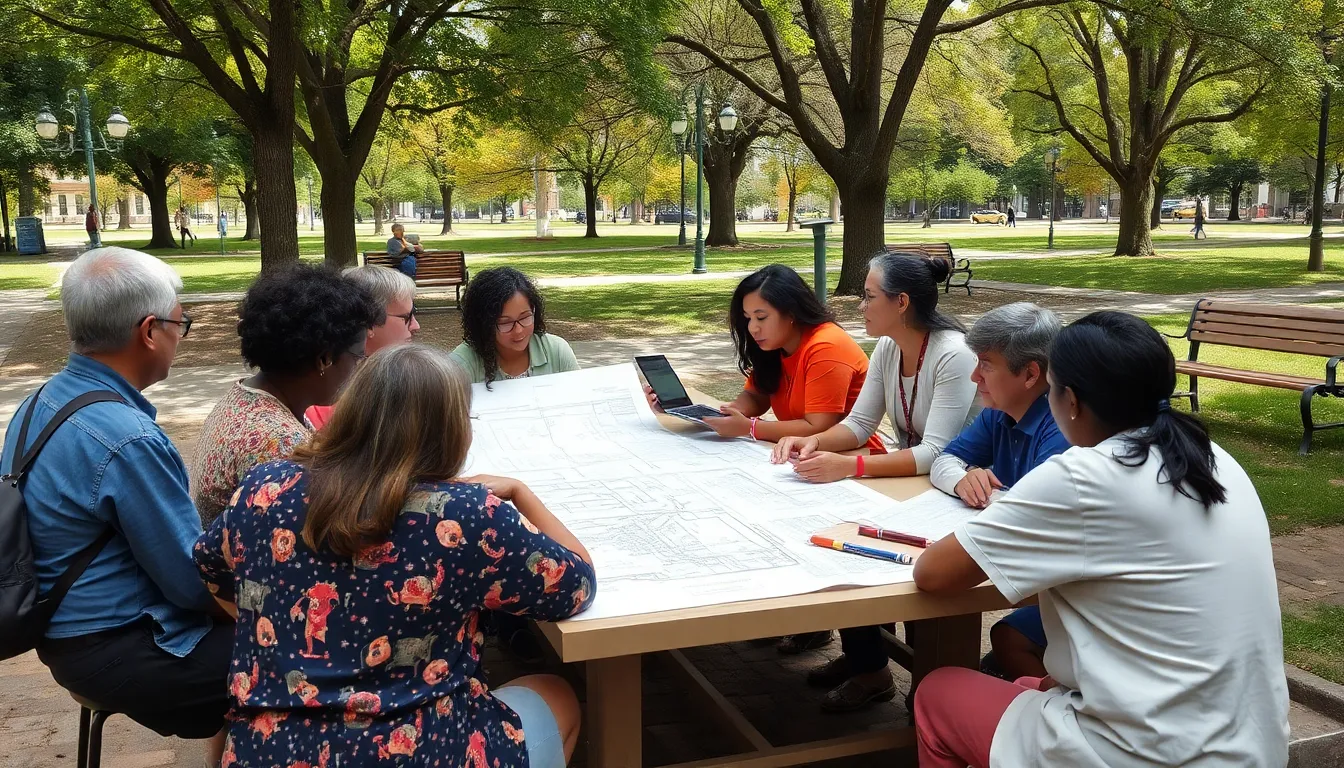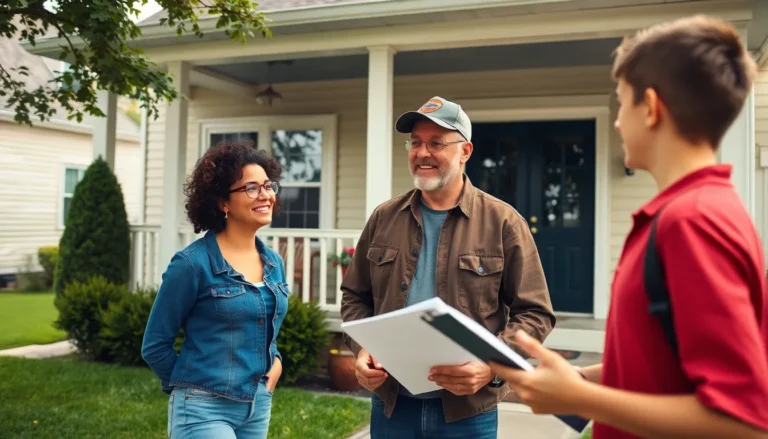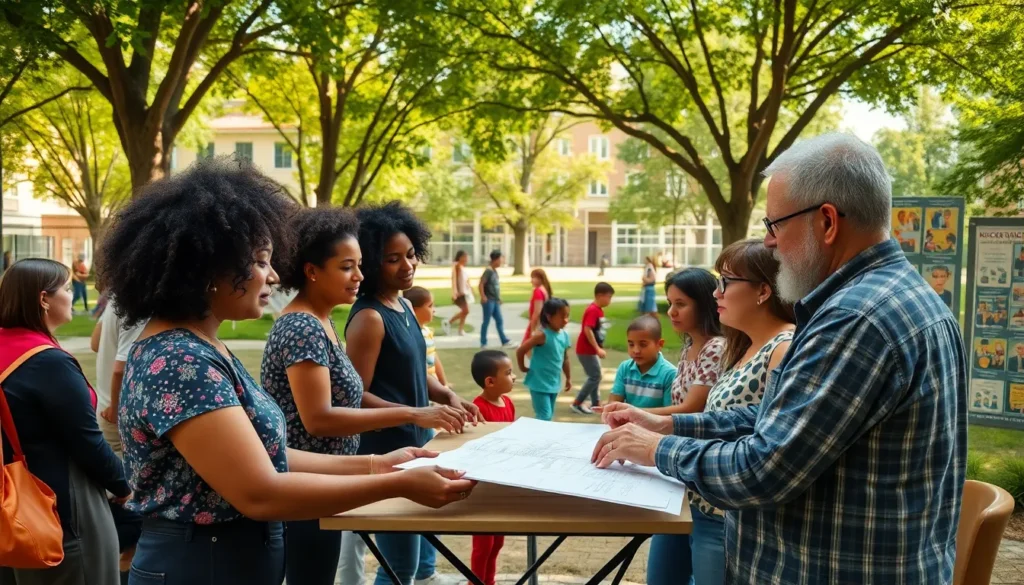Table of Contents
ToggleIn a world where neighborhoods can either feel like a warm hug or a cold shoulder, the art of neighborhood development takes center stage. It’s not just about constructing buildings; it’s about creating vibrant communities that people actually want to live in. Imagine a place where neighbors greet each other with more than just a nod and where parks aren’t just patches of grass but lively gathering spots.
Neighborhood development is the secret sauce that transforms ordinary areas into thriving hubs of activity. It’s about blending homes, businesses, and parks into a delightful mix that makes residents feel like they’ve hit the jackpot. So, let’s dive into the world of neighborhood development and discover how it shapes our lives, one block at a time. After all, who wouldn’t want to live in a place that feels like a community and not just a collection of houses?
Overview of Neighborhood Development
Neighborhood development encompasses the strategies and planning methods used to create inclusive and sustainable communities. It takes into account various aspects like housing, commercial spaces, and public parks, all of which contribute to a thriving urban environment. Community engagement plays a vital role in shaping these developments, ensuring that resident needs and preferences guide the planning process.
Furthermore, the integration of mixed-use spaces attracts diverse groups, fostering interaction among residents. This interaction enhances social connections and creates a vibrant atmosphere where people want to live and work. Effective transportation options also factor heavily into neighborhood planning, as they improve access to essential services and amenities.
Quality green spaces are essential in this context. Parks and recreational areas serve not only as leisure zones but also promote physical and mental well-being. Developers often prioritize these green spaces, recognizing their importance in creating appealing neighborhoods.
Environmental sustainability is another crucial aspect of neighborhood development. Incorporating eco-friendly practices and materials reduces the ecological footprint of new projects. Smart designs can include energy-efficient buildings, renewable energy sources, and water management systems.
Ultimately, successful neighborhood development creates a balance between residential areas, commercial opportunities, and recreational spaces. Communities that prioritize these elements often experience enhanced quality of life for their residents. By focusing on thoughtful designs and sustainable practices, neighborhoods can transform into lively hubs that foster connection and engagement.
Key Principles of Neighborhood Development

Key principles of neighborhood development focus on creating inclusive, sustainable spaces that foster community connection. Effective strategies integrate various elements, ensuring robust engagement and thoughtful design.
Community Engagement
Active participation shapes the development process. Residents have the opportunity to voice their needs and preferences during planning sessions. Utilizing surveys, workshops, and community meetings ensures diverse perspectives are considered. Engaging local stakeholders fosters a sense of ownership among residents, enhancing their commitment to community initiatives. Integrating feedback channels enables ongoing dialogue between developers and residents, adapting plans based on evolving community needs. Building relationships changes neighborhoods, making them more vibrant and welcoming.
Sustainable Planning
Sustainable planning prioritizes environmental responsibility and resource efficiency. Designing neighborhoods with mixed-use spaces encourages walking and cycling, reducing dependence on cars. Green building practices utilize eco-friendly materials and energy-efficient systems, minimizing ecological footprints. Parks and green spaces enhance biodiversity while providing residents with recreational opportunities. Incorporating public transportation options improves access to essential services, further supporting sustainable lifestyles. Overall, strategic planning contributes to resilient communities that thrive economically and environmentally.
Challenges in Neighborhood Development
Neighborhood development faces various challenges that can hinder progress and limit community potential. Key barriers include economic constraints and social inequality.
Economic Barriers
Economic barriers significantly impact neighborhood development initiatives. Funding limitations constrain project viability. Insufficient investment leads to a lack of infrastructure improvement and public services. Developers often encounter high construction costs and regulatory expenses, affecting affordability. Limited access to capital further restricts small businesses from participating in revitalization efforts. Regulatory hurdles can delay projects, increasing costs and discouraging investment. Effective partnerships between public entities and private investors are essential for overcoming these obstacles.
Social Inequality
Social inequality serves as another formidable challenge in neighborhood development. Disparities in income and resources affect community engagement levels. Marginalized groups often experience exclusion in planning processes, leading to unmet needs. Such inequity can exacerbate tensions among residents, hindering social cohesion. Effective outreach strategies must prioritize inclusivity to ensure diverse voices are heard. Addressing these inequalities fosters trust and encourages widespread participation in development efforts, ultimately strengthening community ties.
Successful Case Studies
Numerous successful case studies illustrate effective neighborhood development practices. These examples highlight the potential for revitalizing communities and fostering collaboration among residents.
Urban Revitalization Examples
The transformation of the East Liberty neighborhood in Pittsburgh demonstrates successful urban revitalization. Once struggling, the area now features mixed-use developments that promote residential living alongside retail options. In addition, local amenities, like parks and public spaces, enhance community interaction. Developers concentrated on inclusivity, ensuring affordable housing options coexist with upscale residences. Their efforts attracted new businesses and increased foot traffic, breathing life into once neglected streets.
Collaborative Community Projects
Community-based initiatives in the South Bronx showcase the power of collaboration. Local organizations partnered with residents to create shared spaces that reflect community interests and values. Farmers’ markets and cultural events arose from these partnerships, fostering a sense of ownership among residents. Engaging neighbors in project planning ensured diverse perspectives shaped development strategies. This collaborative approach strengthened social ties, making the neighborhood more resilient to challenges.
Future Trends in Neighborhood Development
Sustainable practices increasingly influence neighborhood development. Ecological design methods prioritize reduced environmental impacts and resource efficiency. Community gardens and urban farming initiatives emerge as popular features, promoting local food production and biodiversity.
Smart technology integration reshapes how neighborhoods function. Smart transportation systems optimize traffic flow while enhancing public transit accessibility. Integration of IoT devices in public spaces provides real-time data on amenities, enhancing resident experiences.
Walkable neighborhoods gain traction due to their numerous benefits. Enhanced pedestrian pathways and bike lanes encourage active lifestyles while reducing car dependence. Social interaction flourishes in these environments, fostering stronger community bonds among residents.
Affordable housing initiatives adopt innovative strategies. Collaborations with local governments address economic barriers by prioritizing mixed-income developments. These efforts ensure diverse housing options cater to varying income levels, fostering inclusivity.
Community engagement remains essential for successful developments. Asset-based approaches empower residents to leverage local strengths in the planning process. Workshops and interactive forums cultivate a sense of ownership, leading to more tailored solutions that reflect community needs.
Green spaces continue to play vital roles in urban vitality. Parks and recreational areas not only improve aesthetics but also enhance residents’ physical and mental well-being. Access to nature contributes to overall quality of life, inviting diverse groups to engage with their surroundings.
Flexible zoning regulations support diverse land uses. Mixed-use developments create opportunities for businesses and residential spaces to coexist harmoniously. These spaces invigorate neighborhoods, driving local economies and promoting vibrant, bustling atmospheres.
Data-driven planning approaches emerge as critical methods. Planners now utilize data analytics to assess community needs and streamline project implementation. By employing these insights, developers can make informed decisions that resonate with residents, ensuring successful outcomes.
Neighborhood development plays a crucial role in shaping vibrant and sustainable communities. By prioritizing inclusivity and community engagement, it fosters connections among residents and enhances their overall quality of life. The integration of mixed-use spaces, green areas, and smart technology not only improves accessibility but also encourages active participation.
As neighborhoods evolve, embracing innovative and eco-friendly practices will be essential for addressing challenges and promoting resilience. By focusing on collaboration and leveraging local strengths, communities can thrive economically and socially. The ongoing commitment to thoughtful planning and sustainable development will ensure that neighborhoods remain dynamic, inclusive, and equipped to meet the needs of future generations.







